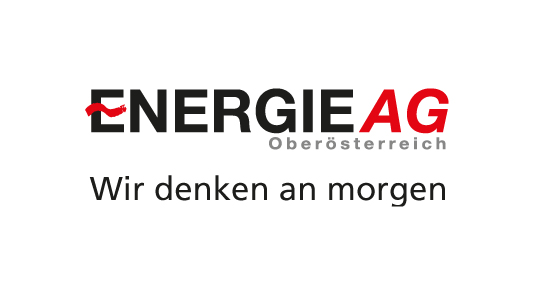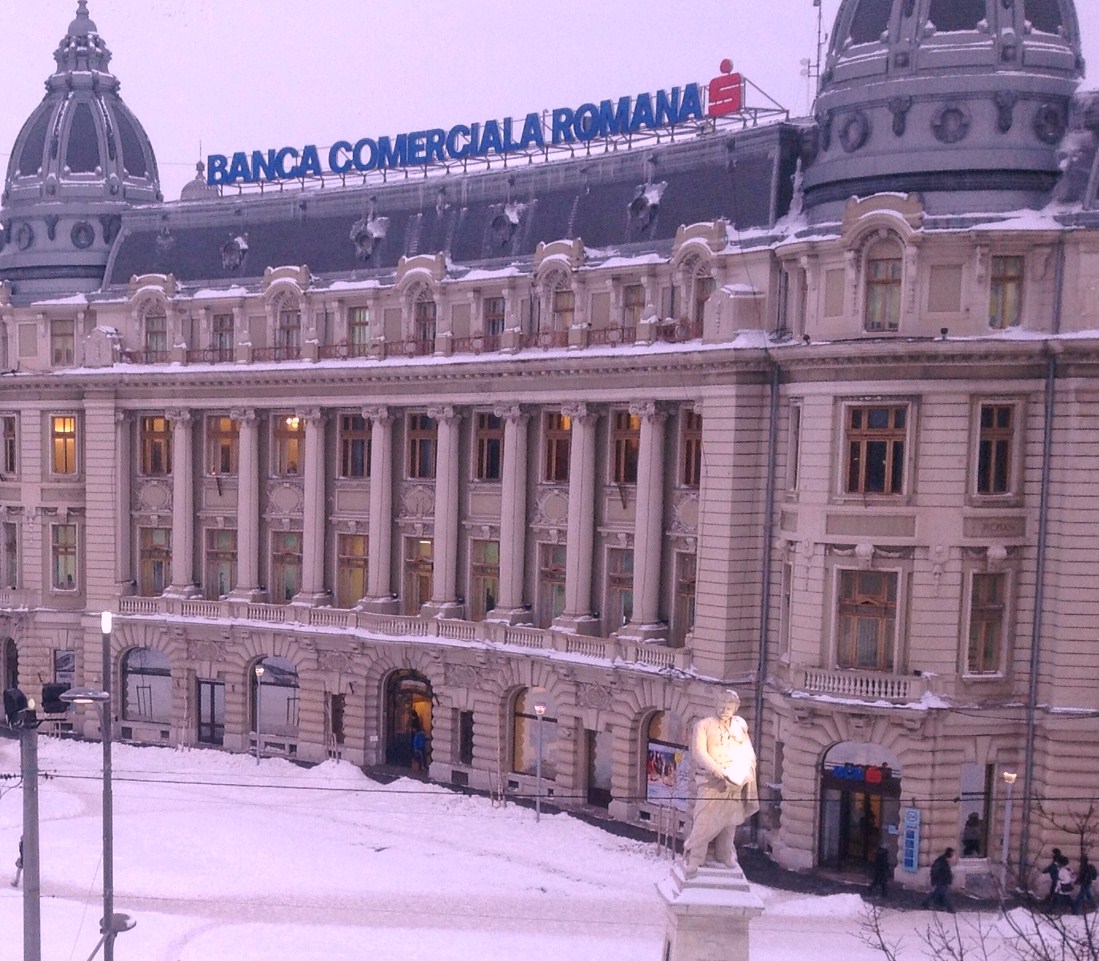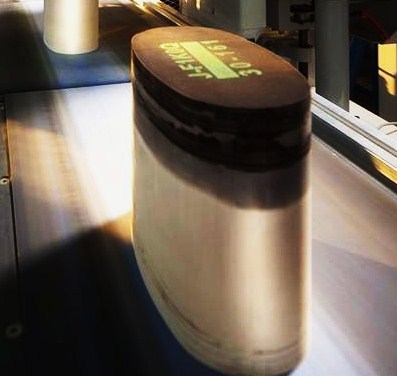Rare Metals at AVALON 2014
AVALON Rare Metals
Zurich, 18 février
 Avalon Rare Metals Inc. is a mineral development company focused on rare metal deposits in Canada. Its 100%-owned Nechalacho Deposit, Thor Lake, NWT is exceptional in its large size and enrichment in the scarce heavy rare earth elements, key to enabling advances in clean technology and other growing high-tech applications. With a positive feasibility study and environmental assessment completed, the Nechalacho Project remains the most advanced potential large new source of heavy rare earths in the world outside of China, currently the source of most of the world’s supply. Avalon is adequately funded, has no debt and its work programs are progressing. Social responsibility and environmental stewardship are corporate cornerstones.
Avalon Rare Metals Inc. is a mineral development company focused on rare metal deposits in Canada. Its 100%-owned Nechalacho Deposit, Thor Lake, NWT is exceptional in its large size and enrichment in the scarce heavy rare earth elements, key to enabling advances in clean technology and other growing high-tech applications. With a positive feasibility study and environmental assessment completed, the Nechalacho Project remains the most advanced potential large new source of heavy rare earths in the world outside of China, currently the source of most of the world’s supply. Avalon is adequately funded, has no debt and its work programs are progressing. Social responsibility and environmental stewardship are corporate cornerstones.
Avalon was the first junior exploration company to formally adopt the Prospectors and Developers Association of Canada’s (PDAC’s) e3 Plus principles and guidelines as policy. Avalon is committed to being an environmentally and socially responsible corporate citizen in how it conducts its exploration and development activities. View Responsible Exploration for more details.
Avalon is the proud recipient of the Prospectors and Developers Association of Canada (« PDAC »), 2010 Environmental & Social Responsibility Award in recognition of the Company’s community engagement efforts during the exploration of its Nechalacho rare earth elements deposit, Thor Lake, NWT. RLU
Download (PDF) AVALON_NWTMN Participation Agreement Feb 2014
Source: www.avalonraremetals.com
Perspectives de l’Économie Marocaine en 2014
Zurich, 18 février
Pour 2014 est attendue une croissance du PIB marocain de 3,5 %, contre 4,6 % l’année précédente. Elle sera principalement portée par le rebond des activités non agricoles, lié au redressement de la situation économique en Europe. La progression du PIB du royaume sera aussi soutenue par le rebond escompté de l’investissement (déjà̀ constaté au deuxième semestre de 2013) et par un relatif dynamisme (+ 4 %) de la consommation des ménages.
La hausse de cette dernière sera cependant limitée par les réductions de subventions récemment décidées par le gouvernement.
Source (Bloomberg, Jeune Afrique, www.finances.gov.ma)
Ces mesures devraient se décliner par une inflation de 3 %, contre 1,9 % en 2013. Mais elles permettront une accélération dans la réduction du déficit public, qui devrait se stabiliser à 4,4% du PIB en 2014, contre 5,9 % en 2013 et 7,6 % en 2012. La poursuite de la reforme de la caisse de compensation est nécessaire pour ramener ce déficit sous la barre des 3 % (niveau envisageable à long terme pour maintenir la dette publique aux alentours de 60 % du PIB).
Réserves de change
Sur le plan des échanges avec l’étranger, l’atténuation du déficit commercial, combinée à une reprise attendue des transferts des Marocains résidant à l’étranger et à une hausse des recettes du tourisme, devrait ramener le déficit du compte courant à 8,1 % du PIB en 2014, contre 8,6 % l’année 2013 et 10 % en 2012.
Malgré́ ce déficit persistant, les réserves en devises devraient légèrement augmenter en 2013 et 2014 grâce à une très forte progression des investissements directs étrangers et au recours grandissant du gouvernement aux émissions de dette à l’international. Mais pour apporter une réponse structurelle et durable à la problématique de la balance des paiements, l’État devrait encourager les grands projets orientés vers l’export (plans Émergence et Azur). RLU
Cameco (CCJ)
Zürich, 10. Februar
 Das vierte Quartalsresultat des zweitgrössten Uranproduzenten der Welt hat gewinnmässig enttäuscht. Der Umsatz lag mit CAD 977 Mio. um 15% über dem Vorjahresniveau und damit 3% über dem Konsens. Die Produktion lag 14% über dem Vorjahresniveau, aber die Preise gerieten unter Druck (–17%). Die realisierten Preise lagen deutlich über den Markterwartungen.
Das vierte Quartalsresultat des zweitgrössten Uranproduzenten der Welt hat gewinnmässig enttäuscht. Der Umsatz lag mit CAD 977 Mio. um 15% über dem Vorjahresniveau und damit 3% über dem Konsens. Die Produktion lag 14% über dem Vorjahresniveau, aber die Preise gerieten unter Druck (–17%). Die realisierten Preise lagen deutlich über den Markterwartungen.
Die Kostensituation hat sich ebenfalls verschlechtert und die Abschreibungen sind höher als erwartet ausgefallen. Der publizierte GpA von CAD 0.38 (im Vorjahr CAD 0.59) vergleicht sich mit einer Konsenserwartung von CAD 0.53. Es gab keine Neuigkeiten von Cigar Lake. Dieser ist das weltweit grösste Uranprojekt (hoher Urangehalt von 16.8% im Gestein, 20% von Cameco Reserven). Der geplante Produktionsbeginn ist im 1. Quartal 2014.
Cameco befindet sich nach wie vor in einem relativ schwierigen Umfeld, aber ein übertriebener Pessimismus wäre auch nicht angebracht. Die Nuklearkatastrophe von Fukushima (Japan) hat der Branche und der Urannachfrage zweifellos einen deutlichen Schlag versetzt. Cameco ist direkt von der Entwicklung in Japan tangiert, weil gut 13% der Umsätze in dieser Region erwirtschaftet werden.
Langfristig dürfte die Kernenergie trotz ihrer Schattenseiten aber weiterhin einen wichtigen Beitrag zur Energieversorgung liefern. Bei relativ stabilen Kosten entsteht kein CO2-Ausstoss; und dies ist ein bedeutender Vorteil. Der Zeit sind gemäss der Energy Information Administration (EIA) 436 Kernkraftwerke in Betrieb. Bis 2022 sind 72 neue Werke geplant, 42 sollen stillgelegt werden. Die Nachfrage nach Uran dürfte damit auf gut 220 Mio. Pfund ansteigen, was bis 2022 einem jährlichen Zuwachs von knapp 3% entspricht.
Die Prognosen sind aber mit grossen Unsicherheiten behaftet. Die Bewertung der risikoreichen und volatilen Cameco-Aktie liegt leicht über dem historischen Durchschnitt. / RLU
Energie Oberösterreich: A– / Outlook stabil
10. Februar, Zürich
Standard & Poor’s
Energie Oberösterreich: A– / Outlook stabil (bisher: A / stabil)
 S&P geht davon aus, dass das operative Umfeld im Bereich Energieerzeugung des österreichischen Versorgungskonzerns Energie Oberösterreich mittelfristig schwierig bleibt. Der Druck auf die Profitabilität des Gesamtkonzerns dürfte anhalten, weshalb S&P das Rating um einen Notch von A auf A– reduziert. Die Ratingagentur erwartet, dass die eingeleiteten Restrukturierungsmassnahmen das Kreditrisikoprofil so festigen werden, dass sich der operative Geldfluss vor Veränderungen im Umlaufvermögen im Verhältnis zu den Schulden (FFO / Debt) mindestens über der Marke von 23% halten kann.
S&P geht davon aus, dass das operative Umfeld im Bereich Energieerzeugung des österreichischen Versorgungskonzerns Energie Oberösterreich mittelfristig schwierig bleibt. Der Druck auf die Profitabilität des Gesamtkonzerns dürfte anhalten, weshalb S&P das Rating um einen Notch von A auf A– reduziert. Die Ratingagentur erwartet, dass die eingeleiteten Restrukturierungsmassnahmen das Kreditrisikoprofil so festigen werden, dass sich der operative Geldfluss vor Veränderungen im Umlaufvermögen im Verhältnis zu den Schulden (FFO / Debt) mindestens über der Marke von 23% halten kann.
Das Outlook der neuen Einstufung wird mit stabil angegeben. /Bloomberg/RLU
Viewpick: Romania Capital Market
Stepping forward to an emerging economy
The European Co mmission recognised that Romania has made progress in reforming its judiciary and noted improving cooperation between local institutions, but still warned that the independence of courts remain an issue. Romania has many emerging market characteristics; it shares old unhealed wounds but steps on with the legacy of previous successes.
mmission recognised that Romania has made progress in reforming its judiciary and noted improving cooperation between local institutions, but still warned that the independence of courts remain an issue. Romania has many emerging market characteristics; it shares old unhealed wounds but steps on with the legacy of previous successes.
Despite all, the country re-focused the markets on the economic fundamentals. The demand for bonds surges. With political risk receding and bonds offering better yields than other markets in Central and Eastern Europe, Romania will stay in high demand.
The needed trigger for the local stock market is the switch of the actually status in MSCI rankings from frontier to emerging market. And for this liquidity beside transparency and much more commitment of all market players (government, stock exchange management, regulatory institutions and brokers) is required. Read more in (PDF) – Viewpick Romania Capital Market 2014.
Download (PDF)Viewpick Romania Capital Market 2014 RLU
Statement at the Conclusion of the IMF and EC Staff Visit in Bucharest, January 21-February 4, 2014
Bucharest, 04.02.2014
Teams from the International Monetary Fund and the European Commission visited Bucharest during January 21-February 4 to conduct discussions on the combined first and second reviews under the IMF Stand-By Agreement (SBA) and on the status of Romania’s precautionary balance of payments program with the European Union.
Staff level agreement has been reached. The program remains broadly on track. Most end-December performance criteria were met and structural benchmarks have either been met or are nearing completion.
In 2013, real GDP growth picked up to an estimated 2.8 percent, on the back of continued strong exports, while domestic demand remained subdued. Economic activity was driven mostly by robust industrial output and an abundant harvest. In 2014, real GDP is projected to advance by 2.2 percent with domestic demand firming on the basis of a supportive policy framework, better absorption of EU funds, and an improvement in confidence. Historically low inflation is projected to decline further in the first half of 2014 before returning to the upper part of the central bank’s target band in the second half of 2014. The current account deficit is expected to remain between 1 and 1.5 percent of GDP, contributing to Romania’s strong external position, which has helped the country weather recent pressures on emerging markets.
The authorities approved a budget consistent with a deficit target of 2.2 percent of GDP for 2014. A subsequent delay in the implementation of excise taxes on fuel products will be compensated with freezes on the expenditure side. The authorities intend to continue fiscal adjustment in 2015, in order to reach Romania’s medium-term budgetary objective of a structural deficit of 1 percent of GDP, while also accommodating expected further increases in co-financing of projects supported by the EU.
Monetary policy continues to be accommodative, which has translated into a considerable reduction in lending rates. Combined with the government loan guarantee programs, this should enable lending activity in lei to start a modest recovery. Notwithstanding pressures on asset quality, the banking sector continues to maintain reassuring capital, liquidity and provisioning buffers.
Progress on reducing state-owned enterprise arrears has stalled. However, corrective actions are being launched, including budgetary transfers and restructuring measures. An action plan to sustainably lower arrears over the medium term will be defined. Building on the success of the Romgaz IPO, progress toward completion of IPOs of three other state-owned enterprises remains broadly on schedule. Regulatory reforms in energy and transport sectors are set to continue, as well as deregulation of the gas and electricity prices, in line with the earlier agreed roadmaps.
Sources: International Monetary Fund, Regional Office for Romania and Bulgaria press release and European Commission press release
E. R. Regli
DJ Norway Oil Fund Excludes Three Companies on Ethical, Environmental Standards
Norway’s government said it had excluded Sesa Sterlite Ltd. (SSLT), Africa Israel Investments Ltd. (AFIL.TV) and Danya Cebus Ltd. (DNYA.TV) from the investment portfolio of the country’s USD 812 billion oil fund on environmental, and ethical established criteria.
The Norwegian Ministry of Finance said iron ore and copper producer Sesa Sterlite Ltd. was excluded due to « an unacceptable risk of serious environmental damage and serious violations of human rights » connected to its business in India.
Sesa Sterlite’s parent company, U.K.-based Vedanta Resources PLC (VED.LN), has been excluded from the fund’s investments since 2007, after the Norwegian government found its activities in India damaged the environment and injured people.
The ministry said it had excluded Africa Israel Investments Ltd. and its subsidiary Danya Cebus Ltd. because they contributed to « serious violations of individuals’ rights » through the construction of Israeli settlements in Eastern Jerusalem, which is considered illegal, according to Norway’s Council of Ethics and Advisory Board established in 2004 to advise the government on ethical investments.
Africa Israel Investments and Danya Cebus were previously excluded from the fund’s portfolio from August 2010 to August 2013 due to the construction of settlements in Israeli-occupied territories. The investment ban was lifted after Africa Israel Investments claimed it didn’t plan to build more settlements, but was reinstated after Danya Cebus confirmed that it’s doing construction in Eastern Jerusalem.
The ministry of finance also said it had ended a ban on Myanmar government bonds, but said the oil fund was now excluded from investments in government bonds from North Korea, Syria and Iran, should those countries decide to issue them.
The government declared the oil fund wasn’t a foreign policy instrument, and that it only banned investment in certain government bonds when required by international sanctions. The ministry of finance makes the final decision on the fund’s investment strategy.
Eleni Regli
Le Platine : Un marché à haut risque en quête de responsabilité sociale
 Janvier 2014 Comme chaque année, le cours du platine s’est retrouvé encouragé par la perspective d’un arrêt de la production du pays qui extrait les trois quarts du platine mondial. Le 24 janvier à Londres, l’once du précieux métal s’est inscrite à 1 428,60 dollars (1044,50 euros), en hausse de 4,3 % depuis le début de l’année. Et de nouveau comme chaque année, les parties du conflit restent sur des positions inflexibles qui se sont reproduites le dernier vendredi à l’ouverture des négociations.
Janvier 2014 Comme chaque année, le cours du platine s’est retrouvé encouragé par la perspective d’un arrêt de la production du pays qui extrait les trois quarts du platine mondial. Le 24 janvier à Londres, l’once du précieux métal s’est inscrite à 1 428,60 dollars (1044,50 euros), en hausse de 4,3 % depuis le début de l’année. Et de nouveau comme chaque année, les parties du conflit restent sur des positions inflexibles qui se sont reproduites le dernier vendredi à l’ouverture des négociations.
Le redressement de l’offre sud-africaine de platine ne sera pas non plus pour cette année, car l’impact de la restructuration engagée par le numéro un du platine Anglo American Platinum (Amplats) va développer ses effets sur d’autres entreprises minières. La responsabilité sociale de celles-ci pèse lourdement sur le marché du platine.
La 3e édition du Forum des Entrepreneurs Maghrébins
Marrakech, Février 17-18, 2014
 Marrakech s’apprête à accueillir la 3e édition du Forum des entrepreneurs maghrébins, qui doit réunir 500 hommes d’affaires les 17 et 18 février 2014. Les thèmes des discussions sont le lancement de « l’Initiative maghrébine du commerce et de l’investissement ».
Marrakech s’apprête à accueillir la 3e édition du Forum des entrepreneurs maghrébins, qui doit réunir 500 hommes d’affaires les 17 et 18 février 2014. Les thèmes des discussions sont le lancement de « l’Initiative maghrébine du commerce et de l’investissement ».
500 acteurs économiques et institutionnels des cinq pays du Maghreb sont attendus à Marrakech pour la 3e édition du forum des entrepreneurs maghrébins les 17 et 18 février prochains. Organisée par la Confédération générale des entreprises du Maroc (CGEM) qui préside l’Union maghrébine des employeurs (UME), le forum doit notamment permettre le lancement de « l’Initiative maghrébine du commerce et de l’investissement » (IMCI), un projet qui consiste à relancer l’intégration économique de l’Union du Maghreb arabe (UMA), à travers la mobilisation du secteur privé.
L’IMCI entend notamment proposer une véritable feuille de route pour l’intensification des échanges entre les cinq pays. Au cours des deux jours que durera le forum, pas moins d’une cinquantaine d’intervenants originaires du Maghreb, d’Afrique et d’Europe vont aborder des questions essentielles telles que le coût du non-Maghreb, l’intégration logistique, le Maghreb de l’énergie, l’emploi et le dialogue social intra-maghrébin, les services ou encore la convergence douanière et réglementaire.
Seront notamment présents Miriem Bensalah-Chaqroun, présidente de la CGEM, Abdelilah Benkirane, chef du gouvernement marocain, Habib Ben Yahya, secrétaire général de l’Union du Maghreb arabe, Abdellatif Jouahri, gouverneur de Bank Al Maghrib, Christine Lagarde, directrice générale du FMI, Donald Kaberuka, président de la Banque africaine de développement (BAD), Nizar Baraka, ancien ministre des Finances du Maroc ainsi que son homologue tunisien Jaloul Ayed. RLU



